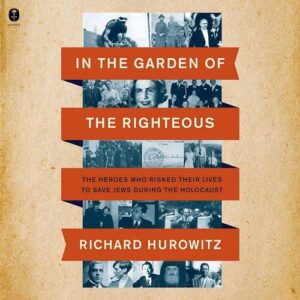 We Jews have so many holidays and days of remembrance. From Nissan 1, the first day of Passover, marking the beginning of the year (Yes, Nissan actually is the first month of the Hebrew calendar) through Purim in the month of Adar, there are scores of holidays — and four new years. Then there is the weekly Shabbat celebration. I’d estimate that at least 100 days are marked in some special way.
We Jews have so many holidays and days of remembrance. From Nissan 1, the first day of Passover, marking the beginning of the year (Yes, Nissan actually is the first month of the Hebrew calendar) through Purim in the month of Adar, there are scores of holidays — and four new years. Then there is the weekly Shabbat celebration. I’d estimate that at least 100 days are marked in some special way.
There are also the days that cross over between secular and Jewish-not days that have some ritual such as Tu B’shevat which is celebrated on January 25/15 Shevat.
But this is not about Tu B’Shevat. It’s about Holocaust commemorations.
The Jewish holiday calendar marks the Holocaust on the 27th of Nissan midway between Passover and Israeli Independence Day. The State of Israel first commemorated the Holocaust in 1949; the day was marked by the burial of thousands of remains from the Flossenberg concentration camp.
By 1959, Yom Hashoah was commemorated largely as it is today with a period of silence and certain businesses closing.
In addition, many Jewish communities remember Kristallnacht on November 9 or 10 when in 1938 a coordinated night of destruction rained down on Jewish businesses and synagogues.
Much of the world marks International Holocaust Remembrance Day on January 27, established by the U.N. in 2005. It was on that day in 1945 that the Soviets liberated Auschwitz.
However, throughout the year materials on the Holocaust appear. The question of “Holocaust fatigue” has arisen over the last years. Is there too much Holocaust material? Should there be humor found in the Holocaust? How can the material engage today’s population, especially young people, two thirds of whom are unaware of that 6 million Jews were killed or have never even heard of the Holocaust? Some people even believe that Jews should be blamed for the Holocaust.
All this is prelude to a fascinating piece of filmmaking, shortlisted for the 2024 Oscar. The brief dark comedy The Anne Frank Gift Shop portrays a marketing meeting about how to reimagine the gift shop in Amsterdam’s Anne Frank House. This article explains the genesis of the filmmaker’s idea when he was shocked at exiting the exhibits and finding himself in the gift shop. There is also a link to the film.
I have watched this film twice — the first time partially in shock at the black humor and the seemingly tasteless jokes. I didn’t want to laugh. It seemed insensitive to laugh. I didn’t want to disrespect Anne Frank or the other victims.
But the film is funny and poignant and ultimately even a little hopeful. It is also exceedingly contemporary and its message about meeting people where they are has a lot of truth to it.
Additional background material on the film, the outstanding cast, and Reboot, which made the film, can be found here.
So writers continue to write historical fiction about the Holocaust, sometimes with humor, but more often with romance, mystery or adventure. And film makers continue to make Holocaust themed movies, not all of which are tearjerkers.
Humor can be a powerful entry into a serious topic and needs to be judged on its own merits.
***********************
In tribute to TuB’Shevat the library features:
Gottesfeld, Jeff. The Tree in the Courtyard. The story of the famous tree that stood outside the Secret Annex where Anne and her family hid. In 2005, the tree was diagnosed as having a fungus and chestnuts from it were gathered and germinated. In 2010, despite the best care and metal supports, the tree blew over in a storm. Seedlings from Anne’s tree, which was at least 170 years old, have been planted around the world.
Recent Holocaust themed additions to the library:
Berest, Anne. The Postcard. This history mystery is the lightly fictionalized story of a mysterious postcard listing the names of the author’s aunts and uncles who disappeared in the Holocaust. (FIC)
Harmel, Kristin. The Book of Lost Names. An elderly Holocaust survivor unravels the mystery of a book containing code names of hidden children — a book for which she was responsible. (FIC)
Horowitz, Richard. In the Garden of the Righteous: The Heroes Who Risked Their Lives to Save Jews During the Holocaust(NF)
Krimstein, Ken. When I Grow Up. Graphic narrative based on newly discovered autobiographies of Jewish teens on the brink of WWII. (YANF)
Ragen, Naomi. The Enemy Beside Me. Milia Gottstein, director of the Survivor’s campaign, is obsessed with forcing Lithuania take responsibility for its role in the Holocaust. Reluctantly she finds herself at a Holocaust Conference in Lithuania where her life is challenged and changed. A good dose of history mixed with romance. (FIC)
Sarid, Yishay The Memory Monster. A harrowing short novel about an all-consuming interest in the Holocaust. (FIC)
Sis, Peter. Nicky & Vera. The story of Nicholas Winton who saved almost 700 Czechoslovakian children from death. (JNF)
Stetson, Caren. Stars of the Night. True story of the Czech Kindertransport which rescued 669 children on the eve of WW II.(JNF)
Stiefel, Chana. The Tower of Life. The story of the permanent photograph exhibit of Yaffa Eliach’s hometown mounted in Washington’s Holocaust Museum.(JNF)
Wiemer, Liza. The Assignment. A contemporary story of about 2 high school students who challenge a school assignment about the Holocaust. Based on a real incident. (YAFIC)
